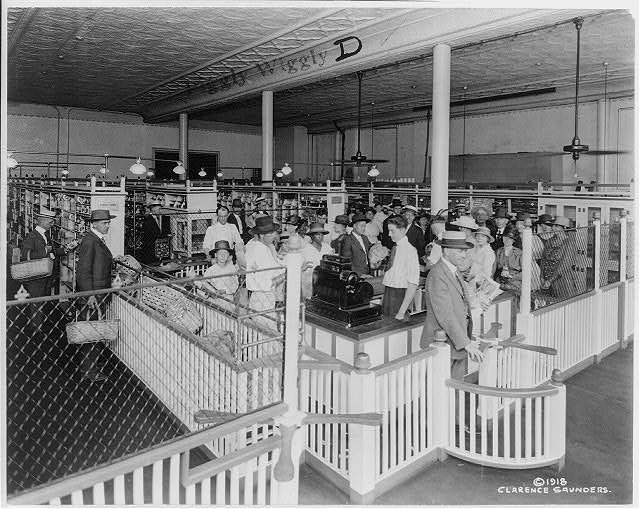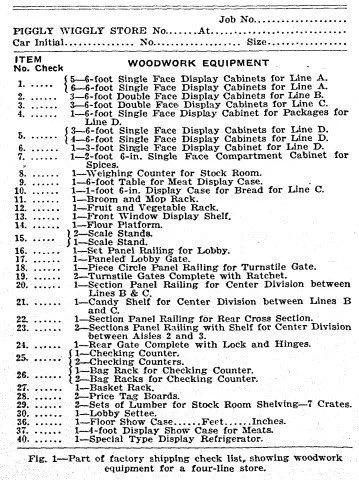
Why was Piggly Wiggly so important?
Born in Memphis, Tennessee, Piggly Wiggly originated in a segregated New South city.
Southern Origins
In an advertisement announcing the opening of a new Piggly Wiggly store at 165 Beale Street, a newspaper advertisement reassured African American customers in the neighborhood that Piggly Wiggly treated all customers equally. Memphis News Scimitar, June 17, 1918.
Piggly Wiggly store, 165 Beale Street, Memphis, Tennnessee. Memphis Public Library
Library of Congress
In a segregated city, where Black customers were used to waiting for White customers to be served first, the racially integrated Piggly Wiggly checkout line was an equalizing experience. The radical equality of the checkout line seems incompatible with racial segregation. One of the questions I explore in Beyond Piggly Wiggly is: why was self-service store experimentation so popular in the segregated South?
In rituals like the Piggly Wiggly Beauty Contest, Clarence Saunders present self-service as an appropriate activity for White women. The Commercial Appeal, Memphis, September 7, 1916.
Piggly Wiggly Blues
Piggly Wiggly became a popular culture icon of the 1920s for diverse audiences. Sinclair Lewis used it as a symbol of White middle class respectability in his novel, Babbitt, while African American blues singers brought new meaning to the idea of serving yourself in the song, Piggly Wiggly Blues.









